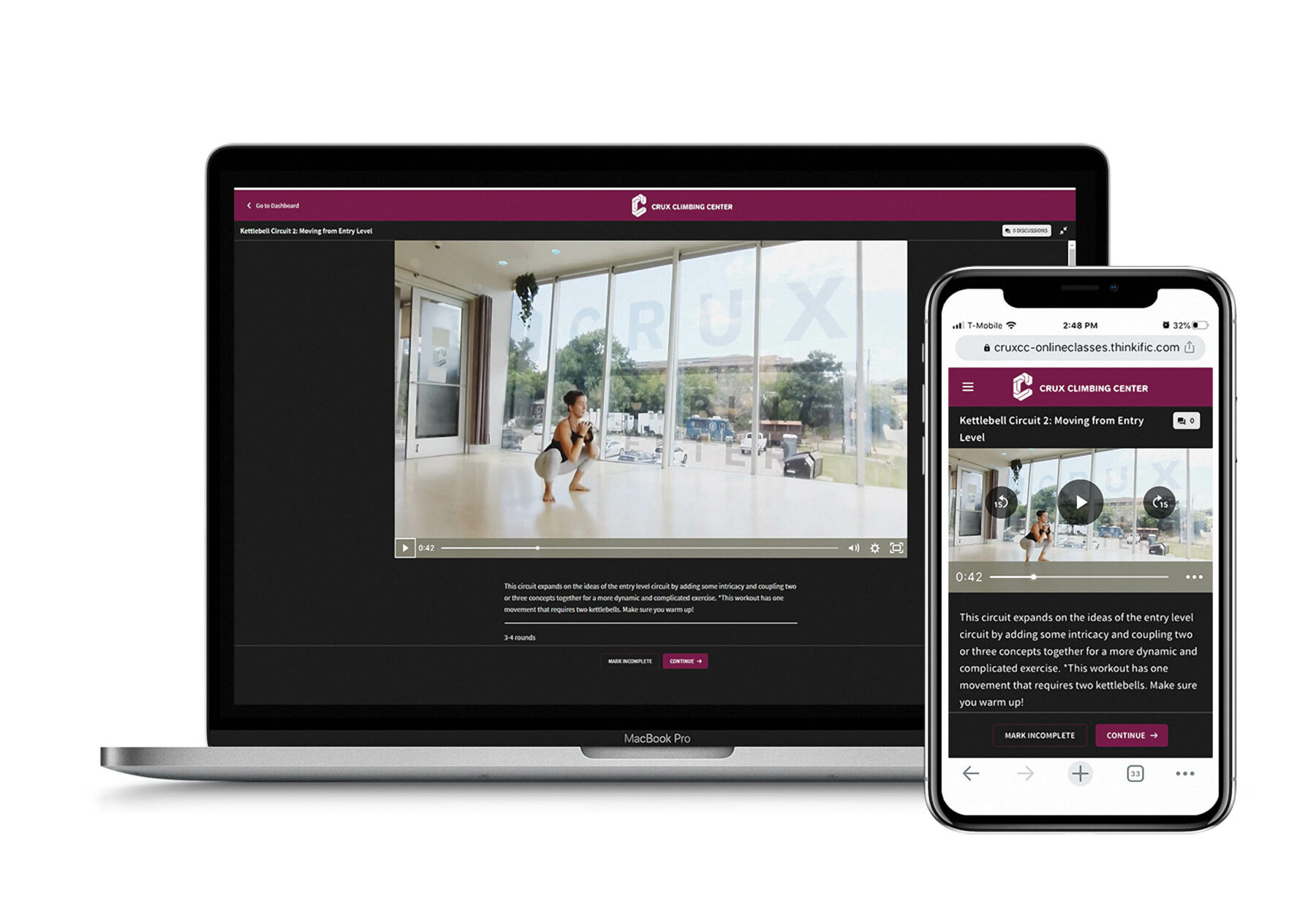How Online Classes Still Affect Gyms Today

When your fitness business is built on cultivating a strong community, what happens when the world is thrown into a completely new orbit, with indoor group classes forced to close?
The pandemic was challenging for everyone, but for small studio owners who build their businesses around group instruction, this was no small thing. Luckily, during the pandemic, many owners had great client retention, keeping 75 to 80% of their recurring members by quickly pivoting to online classes.
Being able to provide livestream classes via Zoom and other video platforms was crucial to stay connected with communities.
“During the pandemic when most everyone was quarantining, logging into Zoom and seeing familiar faces was the highlight of our day,” says Mary Richardson, co-owner of Studio Satya. “We were able to keep our yoga community together and our business alive.”

Courtesy of Mary Richardson
That’s not to say this immediate switch from in-person group classes to an online format was easy as learning the skills to get the technology in place was no small feat. Given the urgency of adapting to keep their businesses open, there was a lot of trial and error along the way, with audio-video equipment, technology platforms and teaching staff how to instruct on camera.
Crux Climbing Center initially tried YouTube as a platform for online classes but found it to be cumbersome for clients to search for specific classes. Since-closed Fuerte Fitness used Zoom for livestream classes but struggled to find a platform for their on-demand classes that was compatible with their existing membership platforms. Studio Satya had similar platform challenges, as Zoom was preferred for the community aspect but didn’t integrate with their existing software, so Richardson had to manually send links to clients signed up for class.
Though the technology issues were eventually ironed out, many studio owners express that they would have put more energy into setting up online classes if there had been more time before jumping in.
“I had never been in a Zoom meeting before, used a livestream camera or known anything about internet upload speeds,” Richardson says. “Clients were missing Zoom links, teachers were having tech issues and I was working around the clock; it was extremely stressful. Knowing all I know now, I would have changed a million things.”
Despite the challenges, many gym owners like Grace Nicholas of Crux give their initial switch to online classes credit for keeping their businesses running during a very challenging time.
“We put in enough effort to make the project worthwhile but not too much to where there wasn’t a return,” Nicholas says. “It ultimately was most important for us to still be able to interact with our members, and that’s where the most value came from beyond revenue.”

Courtesy of Grace Nicholas
Another benefit of online classes is that since people relocated during the pandemic, online classes allowed clients to work with their favorite instructors from anywhere. Once travel picked back up, it was also convenient for those with busy schedules. Online classes continue to add value today and were a savior during the big freeze in 2021 when many were stuck at home.
When studios were able to fully reopen, there were different approaches to continuing online class offerings. Fuerte continued to have a full library of on-demand classes accessible to members. Crux offers packages of online classes to be purchased and rewatched. Studio Satya continues to offer online classes and plans to do so for the foreseeable future. Studio Satya, specifically, saw the most success with their online classes with about 50% of their current clients still using online memberships.
Online classes are here to stay for many studio owners, provided they have the ability to successfully offer them along with their physical spaces. Ryan Parzick of Fuerte ultimately decided to close the doors in 2021 due to the financial strain of providing online classes while covering the overhead of studio and instructor costs. While he was sad to make that call, he says he learned a lot.
“To keep a business going, as long as you keep yourself flexible and agile, you can make it happen to some level of success,” Parzick says. “If you are calcified in the way you do things, you don’t have a chance. Always be agile and adaptable even if times are good, so (when the unforeseeable happens), it’s not as shocking and you are practiced.”
About the Author

Sarah Leahy, CPT is a Minneapolis transplant in East Austin, certified personal trainer, award-winning interior designer and former gym owner. She offers in-person and online training with an emphasis on strength training and building confidence in and out of the gym. Leahy’s passion for strength extends to your business, with a full offering of gym design and business consulting services.






